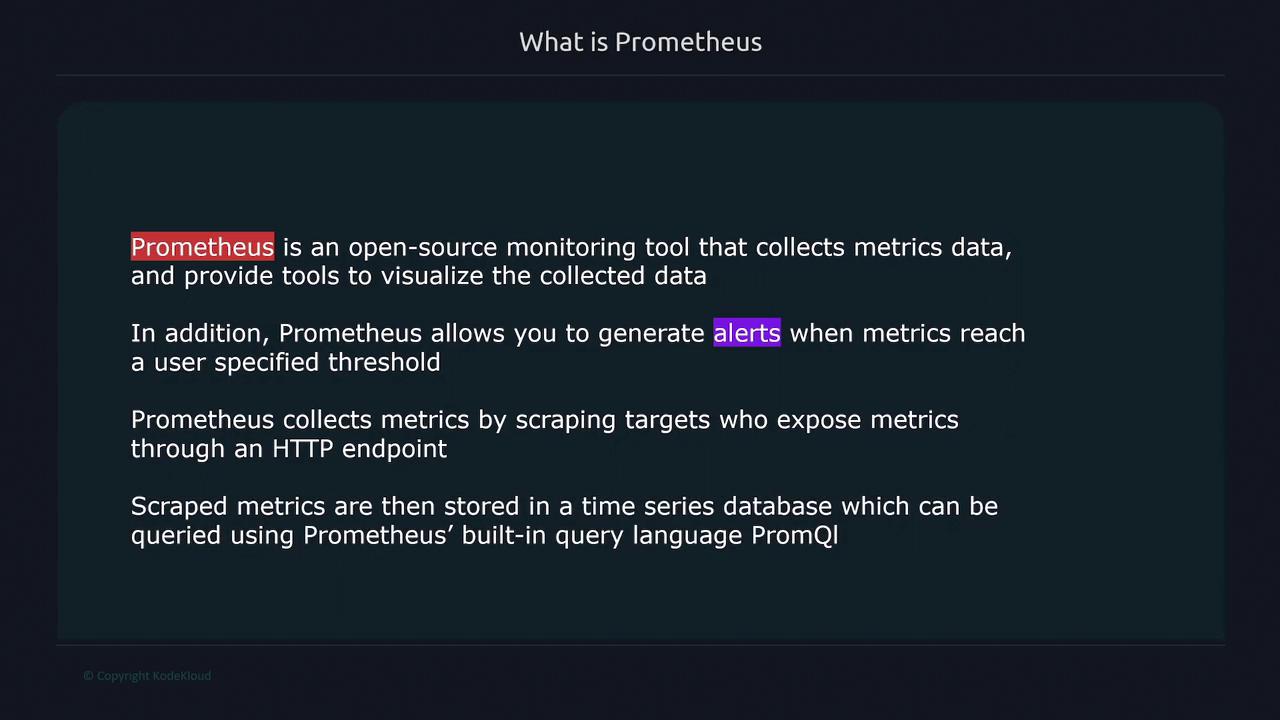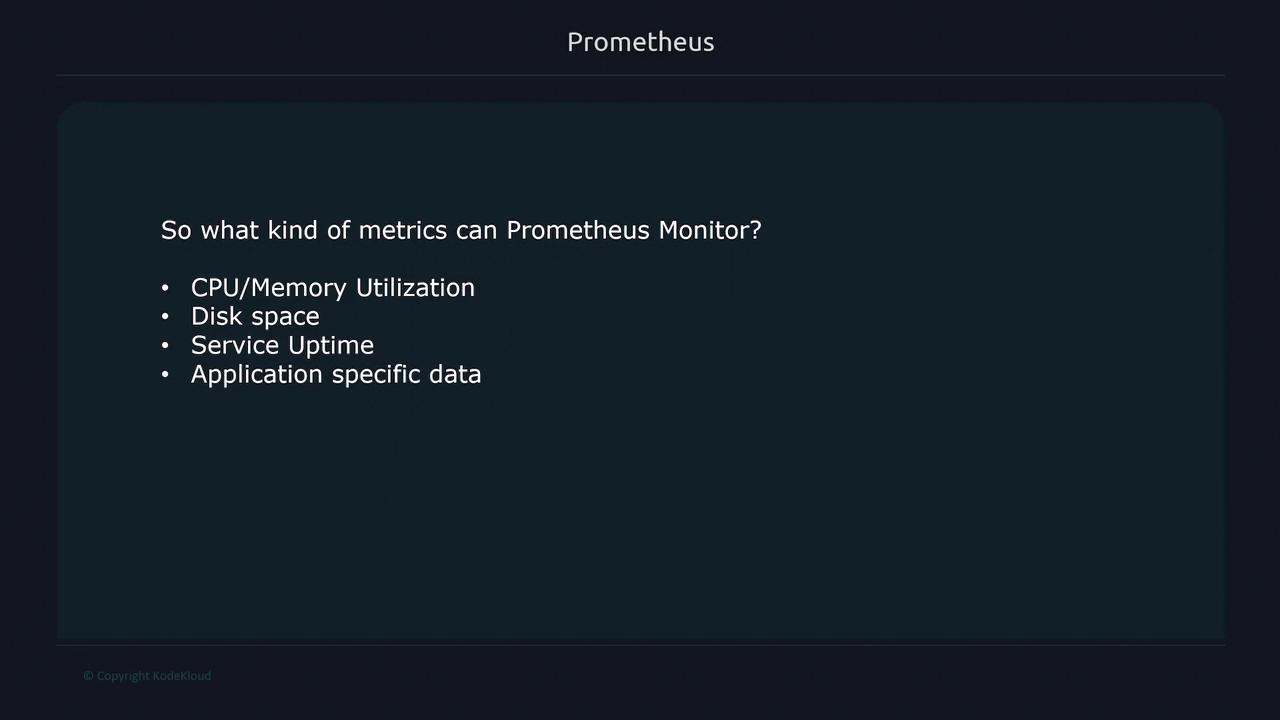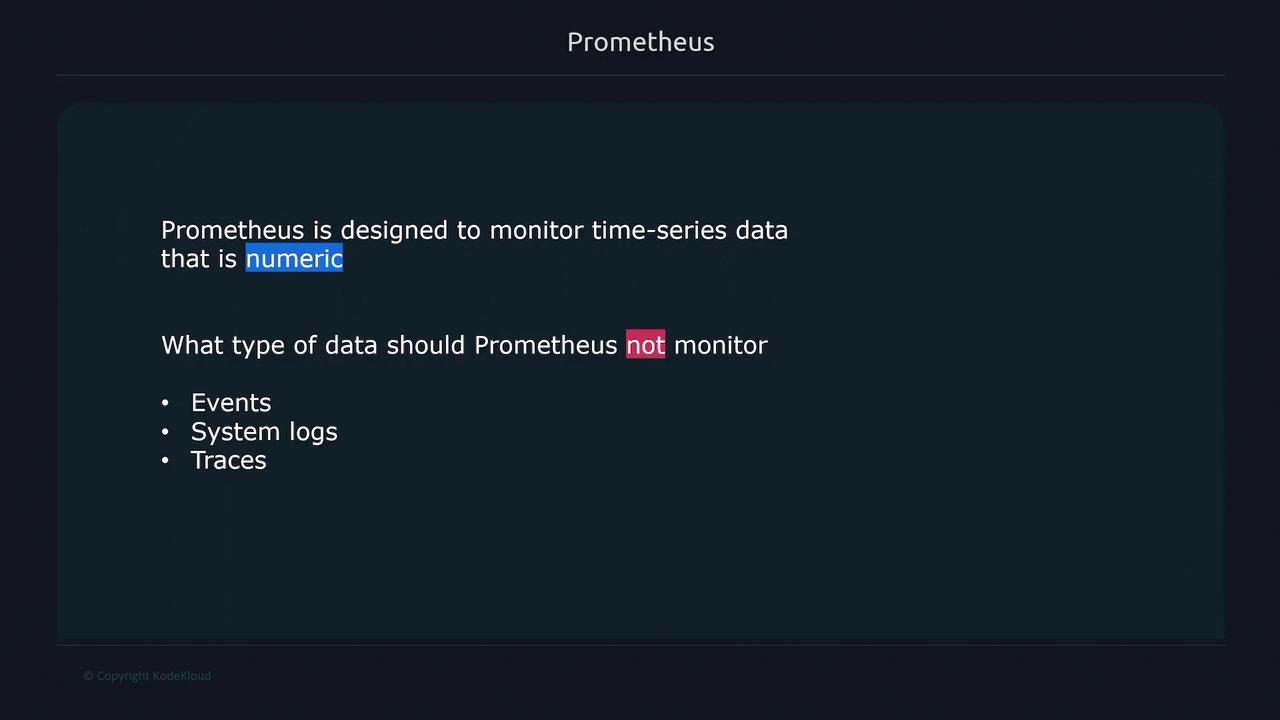Prometheus Certified Associate (PCA)
Prometheus Fundamentals
Prometheus Basics
In this lesson, we explore the fundamentals of Prometheus, an open-source monitoring solution that collects performance metrics, visualizes them, and offers built-in alerting. Prometheus provides essential insights into your systems, making it a key component in modern infrastructure monitoring.
What is Prometheus?
Prometheus collects data by scraping metrics from HTTP endpoints exposed by your applications or systems. These endpoints return the necessary metrics data, which Prometheus stores in a time series database. With its powerful query language, PromQL, you can efficiently analyze these metrics to understand and optimize system performance.

Types of Metrics
Prometheus is capable of monitoring a wide range of metrics, such as:
- System-level metrics: CPU and memory utilization, disk space, and service uptime.
- Application-specific data: Exception counts, latency issues, and the number of pending requests.
This wide-ranging capability allows you to tailor monitoring precisely to your requirements. Additionally, Prometheus seamlessly integrates with various platforms—including operating systems, networking devices, and databases—ensuring a comprehensive view of your entire technology stack.

Monitoring Numeric Time Series Data
[!WARNING] Important
Prometheus is optimized specifically for numeric time series data. It is not designed to monitor non-numeric content such as event logs, system logs, or traces.
This focus on numeric data enables accurate tracking and analysis of performance metrics over time, helping you quickly identify trends and potential issues.

Background and Additional Resources
Originally sponsored by SoundCloud, Prometheus has evolved into a cornerstone of modern monitoring. In 2016, it joined the Cloud Native Computing Foundation and is primarily developed in Go (Golang).
For more comprehensive details, please visit the official Prometheus documentation.

Watch Video
Watch video content